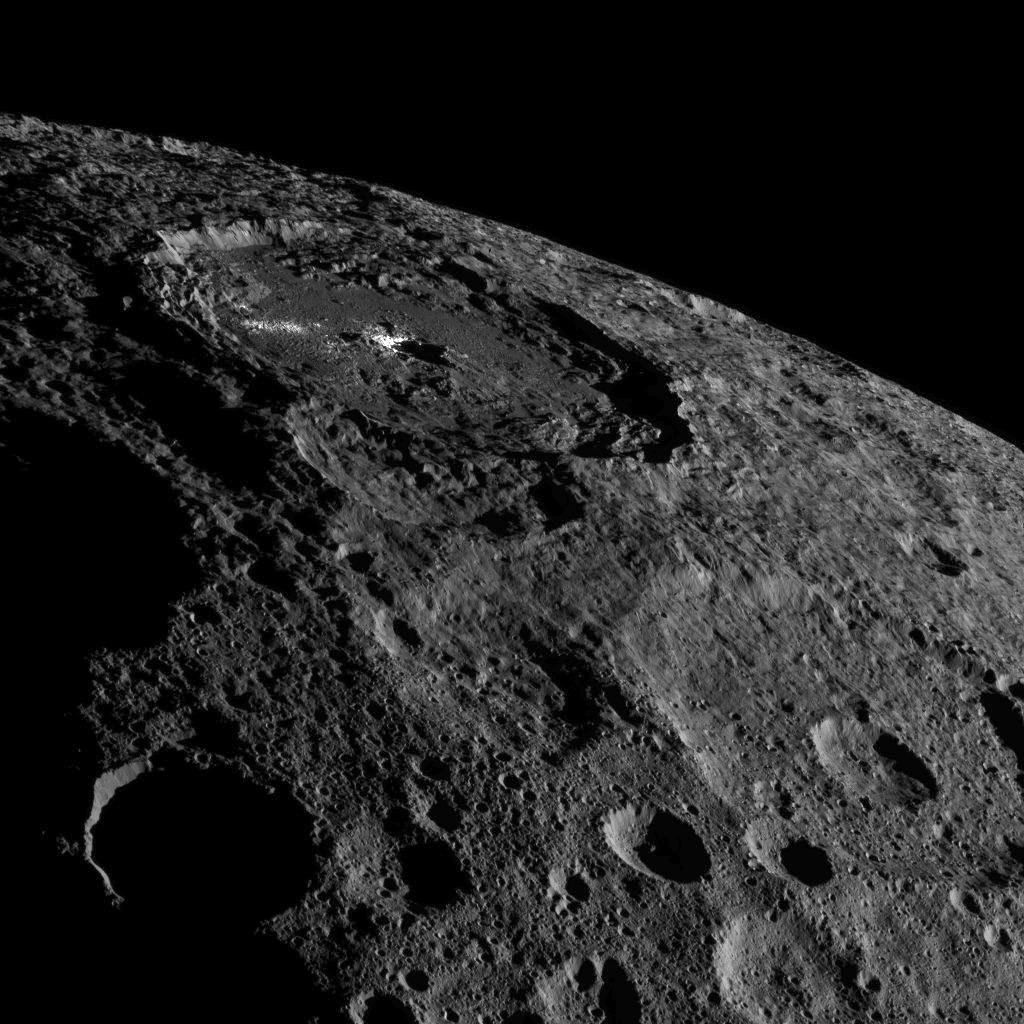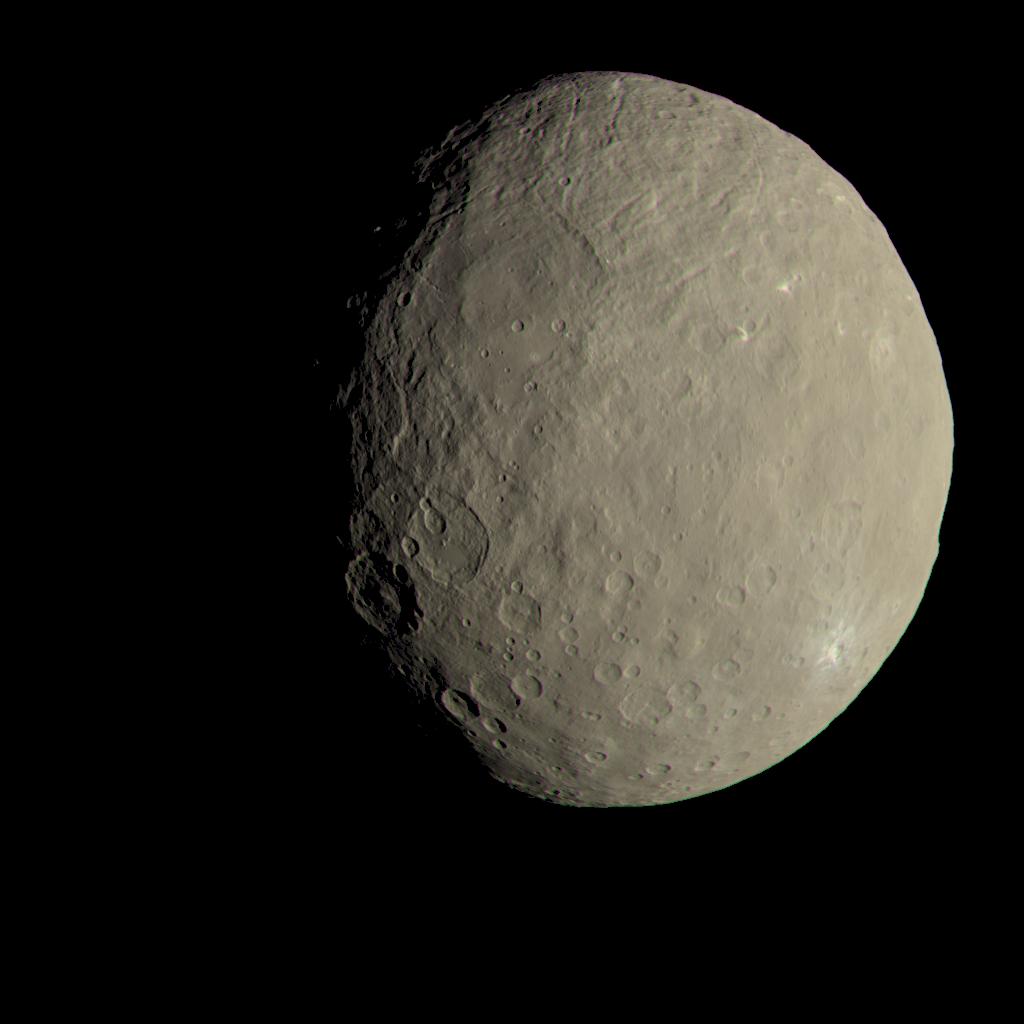NASA Probe Snaps Stunning New Pics of Dwarf Planet Ceres

NASA's Dawn probe is snapping stunning new views of the dwarf planet Ceres as the spacecraft pushes ever higher above the small world.
In one image, Ceres' huge Occator Crater shows its central bright region, the brightest on Ceres. The crater itself is 57 miles wide (92 kilometers), and 2.5 miles deep (4 km). That makes it 77 times larger than the Barringer Crater in Arizona. Dawn took the picture when it was about 920 miles (1,480 km) above the surface, in early October. [Check out more amazing Ceres photos by Dawn]
Planetary scientists think the bright spots might be from briny material bubbling up during geologic activity; the liquid would sublimate away leaving the salts behind. Another asteroid slamming into Ceres could also cause upwelling, which is what some think happened at Occator Crater.
Scientists also released an image that gives an idea of what Ceres would look like if humans could see it with their own eyes, close up.
Dawn's new orbit will be 4,500 miles (7,242 km) from Ceres. NASA is sending the probe to higher altitudes where it can make additional measurements. For example, the spacecraft will use its gamma ray and neutron spectrometer to look at the cosmic rays that suffuse the space around the asteroid, to compare them with readings closer in. The background "noise" can then be separated from the signal, allowing more scrutiny of Ceres' composition.
Ceres started working its way to the new orbit on Nov. 4. While the primary mission was completed in July, NASA extended the mission as the probe was still functioning.
NASA's Dawn spacecraft launched in 2007 and first journeyed to Vesta, entering orbit in July 2011. In September 2012 it left orbit to go to Ceres, where it arrived in March 2015.
Breaking space news, the latest updates on rocket launches, skywatching events and more!
You can follow Space.com on Twitter @Spacedotcom. We're also on Facebook & Google+. Originally published on Space.com.

Jesse Emspak is a freelance journalist who has contributed to several publications, including Space.com, Scientific American, New Scientist, Smithsonian.com and Undark. He focuses on physics and cool technologies but has been known to write about the odder stories of human health and science as it relates to culture. Jesse has a Master of Arts from the University of California, Berkeley School of Journalism, and a Bachelor of Arts from the University of Rochester. Jesse spent years covering finance and cut his teeth at local newspapers, working local politics and police beats. Jesse likes to stay active and holds a fourth degree black belt in Karate, which just means he now knows how much he has to learn and the importance of good teaching.

